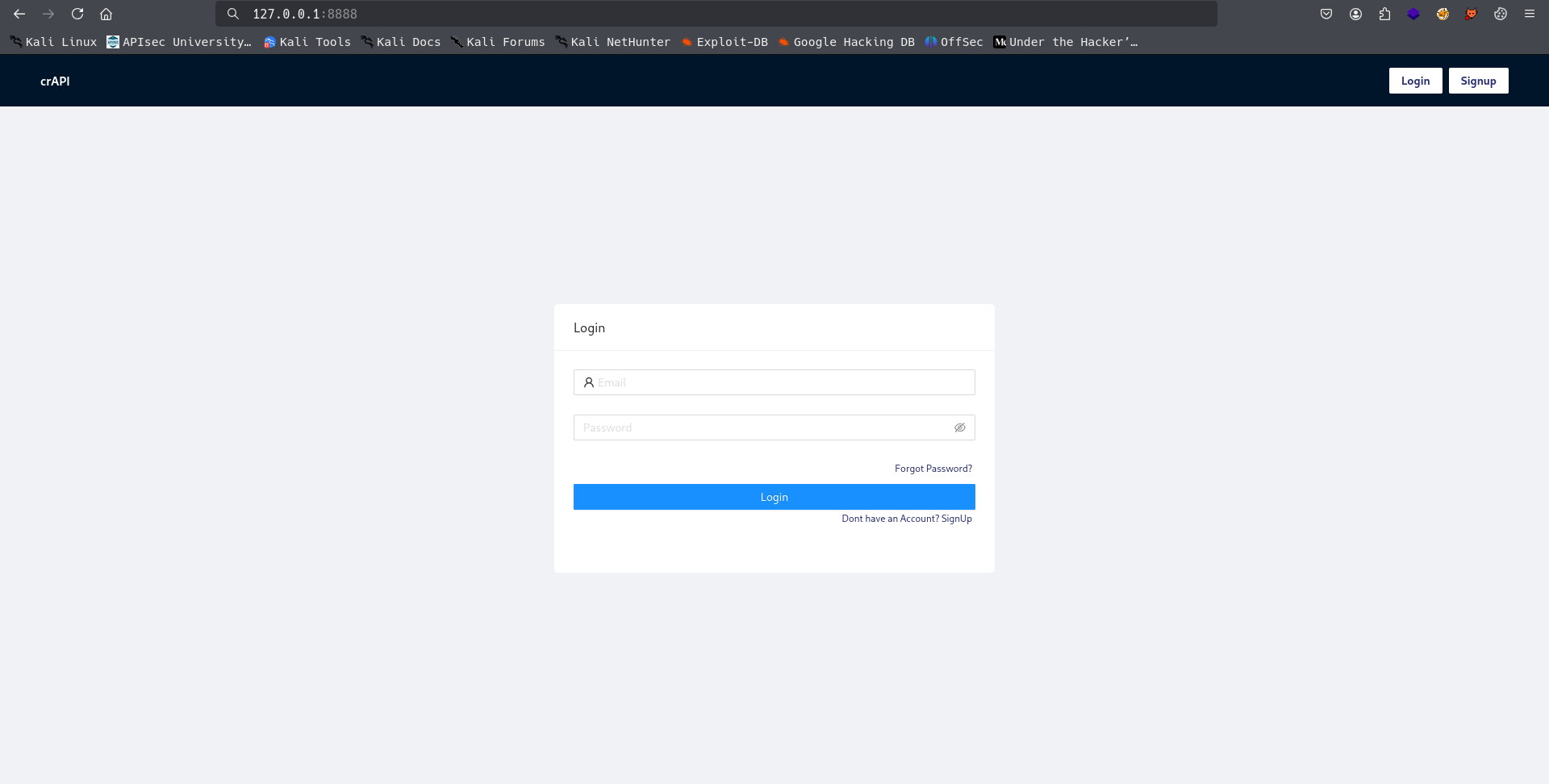Installing OWASP crAPI on Linux for API Security Testing
🧪 Introduction
Modern web applications rely heavily on APIs, and with that comes the need to rigorously test them for vulnerabilities. The OWASP crAPI (Completely Ridiculous API) is a deliberately vulnerable API designed for learning and practicing API security testing.
In this blog, we’ll walk through how to install OWASP crAPI on a Linux machine and start using it for security testing.
What Is OWASP crAPI?
OWASP crAPI is a real-world style vulnerable API developed by the OWASP community. It mimics an online car-related service, complete with user registration, authentication, and functionality such as updating personal details, VIN lookup, and more.
It’s ideal for practicing:
1
2
3
4
5
6
7
8
9
Broken authentication
Broken object-level authorization (BOLA)
Mass assignment
API misconfigurations
Security testing tools like Burp Suite, OWASP ZAP, and Postman
🛠️ 🖥️ System Requirements
Before installing crAPI, ensure you have:
1
2
3
4
5
A modern Linux distribution (Ubuntu/Debian recommended)
Docker and Docker Compose installed
Internet connection (to pull Docker images)
🐳 Step 1: Install Docker and Docker Compose
If not already installed:
1
2
3
4
5
6
7
8
9
10
11
12
# Update your system
sudo apt update && sudo apt upgrade
# Install Docker
sudo apt install docker.io -y
# Enable and start Docker
sudo systemctl enable docker
sudo systemctl start docker
# Install Docker Compose
sudo apt install docker-compose -y
Verify installation:
1
2
docker --version
docker-compose --version
📦 Step 2: Clone the OWASP crAPI Repository
Clone the official repository from GitHub:
1
2
3
4
git clone https://github.com/OWASP/crAPI.git
cd crAPI
cd deploy
cd docker
⚙️ Step 3: Configure and Start crAPI
OWASP crAPI uses Docker Compose to spin up all necessary containers:
1
docker-compose up -d
This command will:
1
2
3
Pull the necessary Docker images
Spin up containers for the API, frontend, and supporting services (e.g., database)
To verify everything is running:
1
docker ps
🌐 Step 4: Accessing crAPI
Once the containers are up, visit:
1
2
3
Frontend: http://localhost:8888
API Docs (Swagger): http://localhost:8888/swagger
The app simulates a car-related web service. Try registering a new account and explore its functionality.
Step 5: Begin API Security Testing
Use tools like:
1
2
3
4
5
Burp Suite: Intercept traffic and identify broken object-level access
OWASP ZAP: Scan the API and identify common vulnerabilities
Postman: Send crafted API requests manually
Start exploring:
1
2
3
4
5
6
7
Broken Auth
Mass Assignment
Insecure Direct Object References (IDOR)
Misconfigured JWT tokens
🛑 Troubleshooting Tips
1
2
3
4
5
Port already in use? Edit docker-compose.yml to change exposed ports.
Docker errors? Try docker-compose down and then up -d again.
Access issues? Ensure firewall rules aren’t blocking port 8888.
🔐 Warning: Use Responsibly
crAPI is deliberately vulnerable. Never expose it to the internet or run it on a production machine. Use only in a secure, isolated lab environment.
✅ Conclusion
Installing OWASP crAPI on Linux is straightforward with Docker. It’s an excellent tool for learning about API vulnerabilities in a safe, controlled environment. Whether you’re preparing for bug bounty hunting or studying for a certification like OSWE, crAPI provides hands-on experience with real-world API issues.
